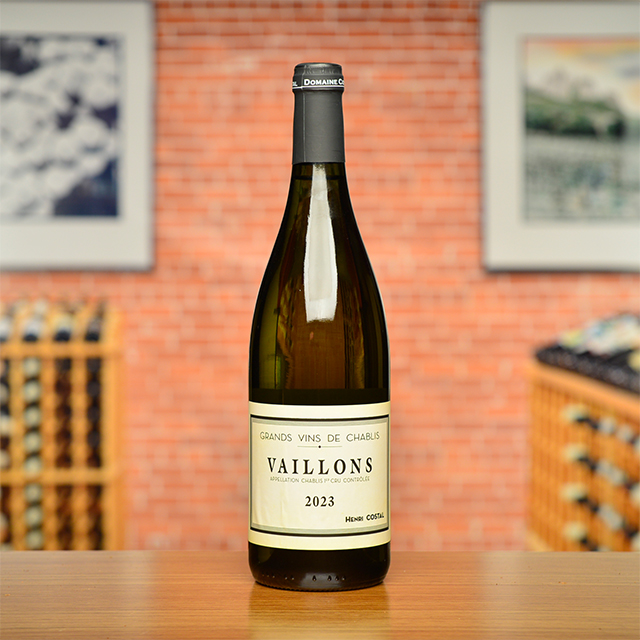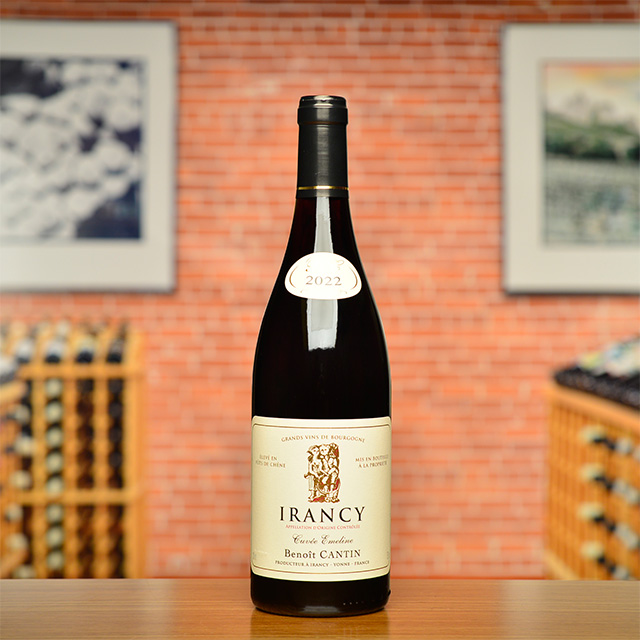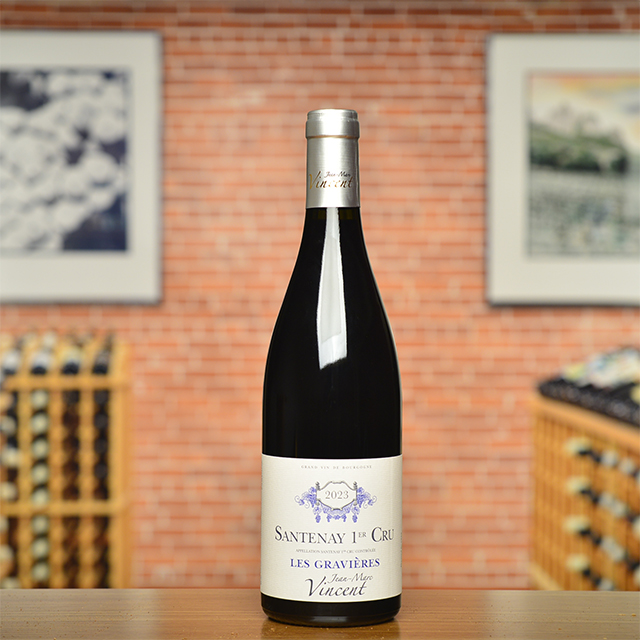Notify me
2019 Marsannay Blanc “Clos du Roy”
Régis Bouvier
Régis makes two reds and two whites from adjoining vineyards in Marsannay, the Clos du Roy higher up on the slope and the Longeroies down below on the gentle saddle between the slope and the valley floor. Clos du Roy always seems to have a bit more meat on its bones, a little more depth and richness, in both the red and the white versions. It is more masculine in style, while Longeroies (which means “alongside the king”) is more supple and elegant. I find the Clos du Roy blanc to be quite versatile at my house in Meursault, especially with fowl, pork, and veal.
In case you were wondering, the Clos du Roy (the king’s clos or vineyard) supplied the Ducs de Bourgogne in Dijon with their house pour back in the 14th century.
—Dixon Brooke
| Wine Type: | white |
| Vintage: | 2019 |
| Bottle Size: | 750mL |
| Blend: | Chardonnay |
| Appellation: | Marsannay |
| Country: | France |
| Region: | Burgundy |
| Producer: | Régis Bouvier |
| Vineyard: | .5 ha, 10 years |
| Soil: | Limestone, marl, clay, stone, and gravel |
| Farming: | Lutte Raisonnée |
| Alcohol: | 13% |
More from this Producer or Region

2024 Chablis 1er Cru “Fourchaume”
France | Burgundy
Dense layers of sea salt and stone are tightly coiled around a small drop of lemon.

2020 Bourgogne Pinot Beurot “Les Grands Poisots”
Domaine Lucien Boillot et Fils
France | Burgundy
Pinot Beurot is the Burgundian name for their local strand of Pinot Gris. It is unique and delicious and showcases an interesting bit of Burgundy’s history.

2022 Givry Blanc “Clos des Vignes Rondes”
France | Burgundy
A bright, chalky personality full of energy and thirst-quenching savor.

2022 Pommard 1er Cru “Saussilles”
France | Burgundy
The first release from this vineyard—a wine of incredible purity and concentration.

2023 Chablis 1er Cru “Vaillons”
France | Burgundy
A stunning value from one of Chablis’ oldest premier cru vineyards, with a lovely mouthful of stone fruit and hint of lemongrass.

2022 Gevrey-Chambertin
France | Burgundy
Classic Gevrey, with an emphasis on forward fruit and pleasure, great structure as well.

2021 Marsannay Blanc “Clos du Roy”
France | Burgundy
I find the Clos du Roy blanc to be quite versatile at my house in Meursault, especially with fowl, pork, and veal.

2022 Irancy “Cuvée Emeline”
France | Burgundy
Emeline is sourced from the domaine’s favorite bits of their favorite parcels and then long-aged in barrel for a deeper, darker Irancy.

2022 Romanée-Saint-Vivant Grand Cru
France | Burgundy
With some age, this will develop into one of the most gorgeous Pinot Noirs to ever grace your glass.

Ratafia de Bourgogne
France | Burgundy
The perfect addition to your holiday season: decadent and lush, full of dense autumnal fruit and Burgundian finesse.
About The Producer
Régis Bouvier
Régis Bouvier in Marsannay achieves a rare hat trick in Burgundy, the mastering of all three colors–red, white and rosé, through reasonable yields and high quality terroirs. Bouvier makes the best Burgundian rosé that we have ever tasted, his whites are delicious, with their own particular character completely unlike other Chardonnays from Burgundy, and his reds are his crowning achievement, managing to be wild and exciting while refined and elegant at the same time.
About The Region
Burgundy

In eastern central France, Burgundy is nestled between the wine regions of Champagne to the north, the Jura to the east, the Loire to the west, and the Rhône to the south. This is the terroir par excellence for producing world-class Pinot Noir and Chardonnay.
The southeast-facing hillside between Dijon in the north and Maranges in the south is known as the Côte d’Or or “golden slope.” The Côte d’Or comprises two main sections, both composed of limestone and clay soils: the Côte de Nuits in the northern sector, and the Côte de Beaune in the south. Both areas produce magnificent whites and reds, although the Côte de Beaune produces more white wine and the Côte de Nuits more red.
Chablis is Burgundy’s northern outpost, known for its flinty and age-worthy Chardonnays planted in Kimmeridgian limestone on an ancient seabed. Vézelay is a smaller area south of Chablis with similar qualities, although the limestone there is not Kimmeridgian.
To the south of the Côte de Beaune, the Côte Chalonnaise extends from Chagny on its northern end, down past Chalon-sur-Saône and encompasses the appellations of Bouzeron in the north, followed by Rully, Mercurey, Givry, and Montagny.
Directly south of the Chalonnaise begins the Côte Mâconnais, which extends south past Mâcon to the hamlets of Fuissé, Vinzelles, Chaintré, and Saint-Véran. The Mâconnais is prime Chardonnay country and contains an incredible diversity of soils.
More from Burgundy or France
2022 Saint-Romain Blanc
Domaine Taupenot-Merme France | Burgundy
2022 Chablis “Vieilles Vignes”
Domaine Roland Lavantureux France | Burgundy
2022 Rully Blanc 1er Cru “Cloux”
Domaine de Villaine France | Burgundy
2022 Pommard 1er Cru “Saussilles”
Antoine Jobard France | Burgundy
2022 Pouilly-Fuissé “Les Reisses Vieilles Vignes”
Domaine Robert-Denogent France | Burgundy
2021 Rully Rouge 1er Cru “Cloux”
Domaine de Villaine France | Burgundy
2023 Puligny-Montrachet 1er Cru “Sous le Puits”
Domaine Larue France | Burgundy
2023 Savigny-Lès-Beaune 1er Cru “Aux Gravains”
Domaine Pierre Guillemot France | Burgundy
2022 Puligny-Montrachet 1er Cru “La Truffière”
Bruno Colin France | Burgundy
2024 Mâcon-Villages “Terroir de Farges Vieilles Vignes”
Henri Perrusset France | Burgundy
2022 Nuits-Saint-Georges 1er Cru “Les Cailles”
Domaine Robert Chevillon France | Burgundy
2022 Meursault “Bois de Blagny”
Comtesse de Chérisey France | Burgundy
2022 Saint-Romain Blanc
Domaine Taupenot-Merme France | Burgundy
2022 Chablis “Vieilles Vignes”
Domaine Roland Lavantureux France | Burgundy
2022 Rully Blanc 1er Cru “Cloux”
Domaine de Villaine France | Burgundy
2022 Pommard 1er Cru “Saussilles”
Antoine Jobard France | Burgundy
2022 Pouilly-Fuissé “Les Reisses Vieilles Vignes”
Domaine Robert-Denogent France | Burgundy
2021 Rully Rouge 1er Cru “Cloux”
Domaine de Villaine France | Burgundy
2023 Puligny-Montrachet 1er Cru “Sous le Puits”
Domaine Larue France | Burgundy
2023 Savigny-Lès-Beaune 1er Cru “Aux Gravains”
Domaine Pierre Guillemot France | Burgundy
2022 Puligny-Montrachet 1er Cru “La Truffière”
Bruno Colin France | Burgundy
2024 Mâcon-Villages “Terroir de Farges Vieilles Vignes”
Henri Perrusset France | Burgundy
2022 Nuits-Saint-Georges 1er Cru “Les Cailles”
Domaine Robert Chevillon France | Burgundy
2022 Meursault “Bois de Blagny”
Comtesse de Chérisey France | Burgundy
Kermit once said...

Kermit once said...
For the wines that I buy I insist that the winemaker leave them whole, intact. I go into the cellars now and select specific barrels or cuvées, and I request that they be bottled without stripping them with filters or other devices. This means that many of our wines will arrive with a smudge of sediment and will throw a more important deposit as time goes by, It also means the wine will taste better.

















